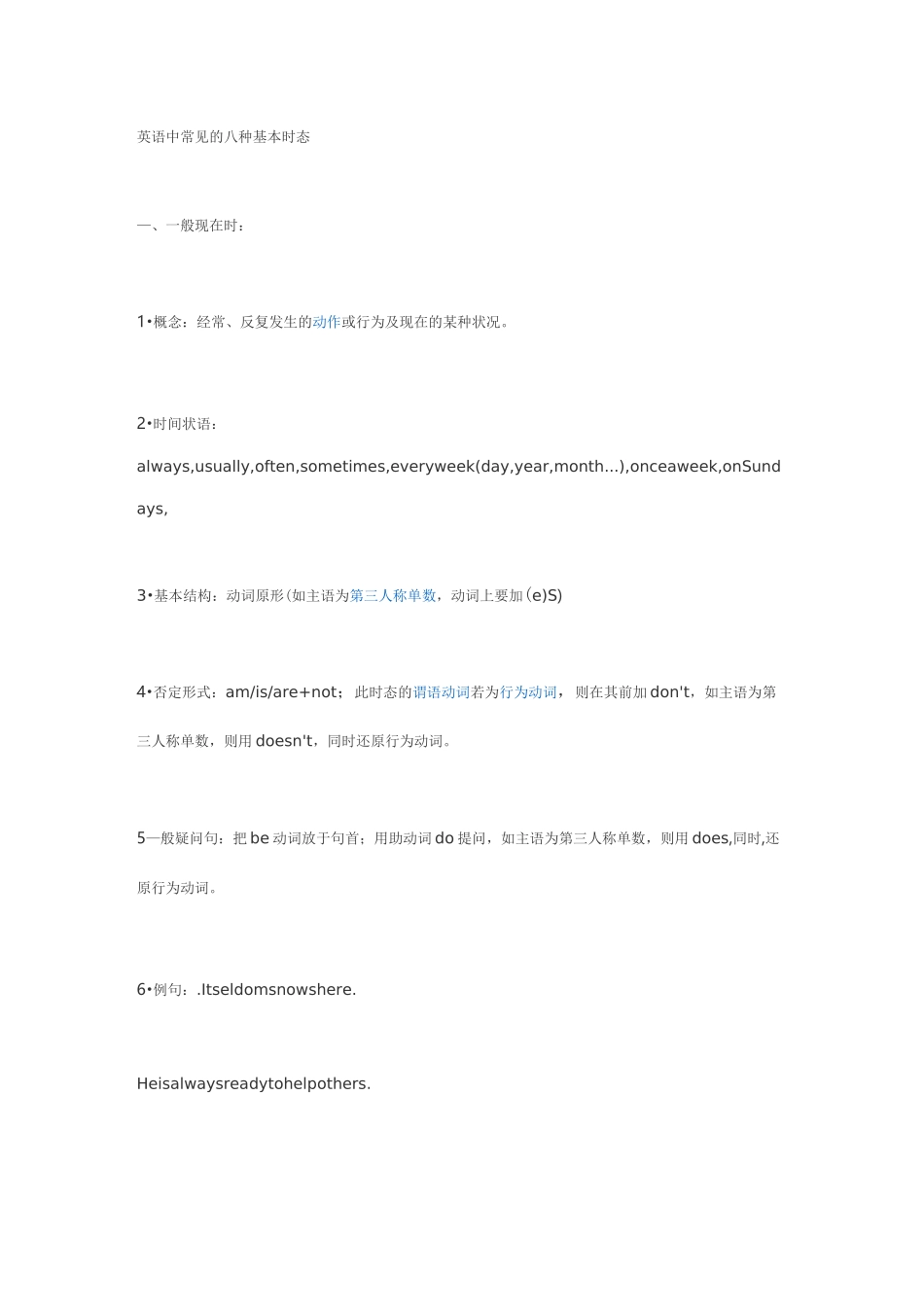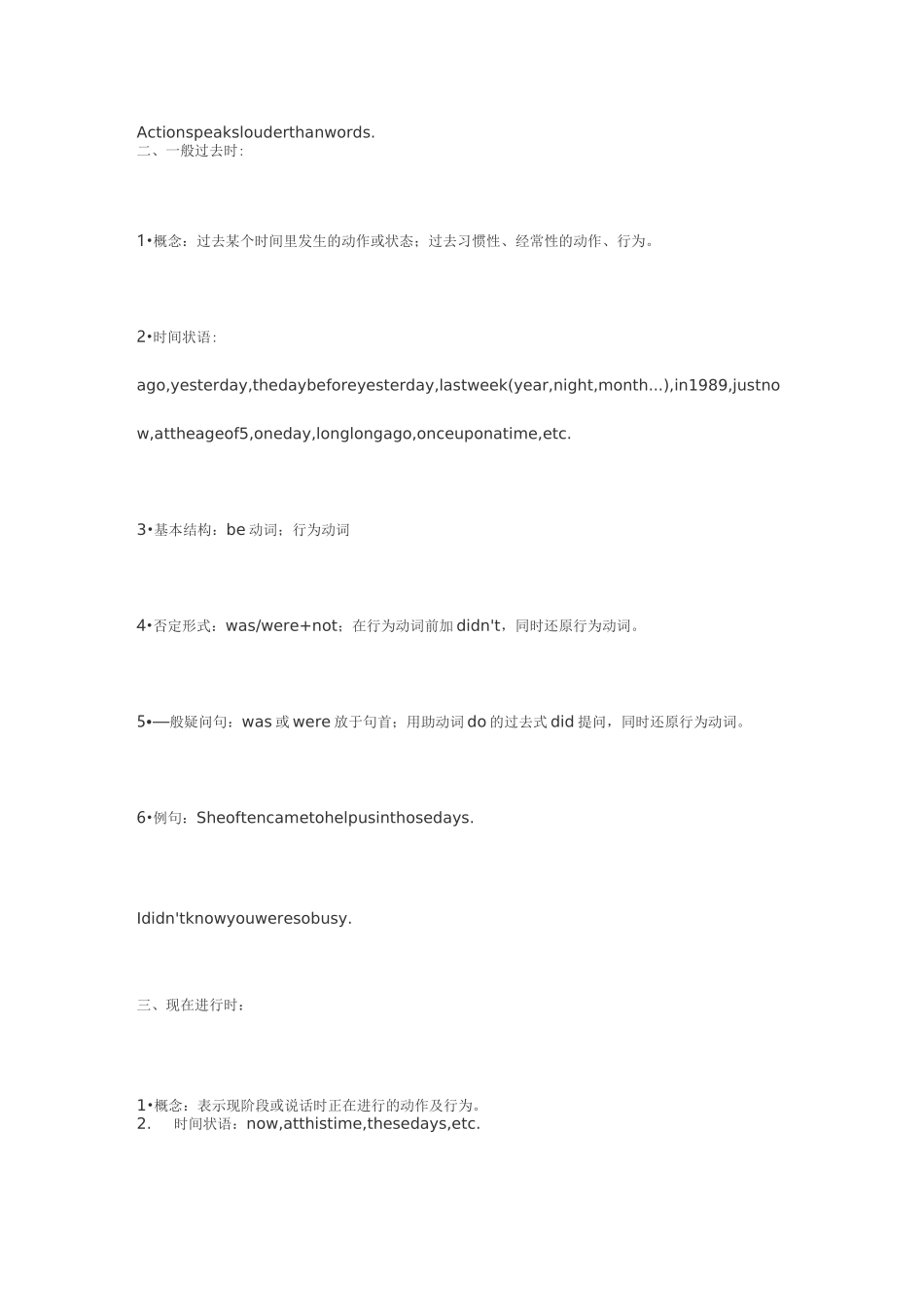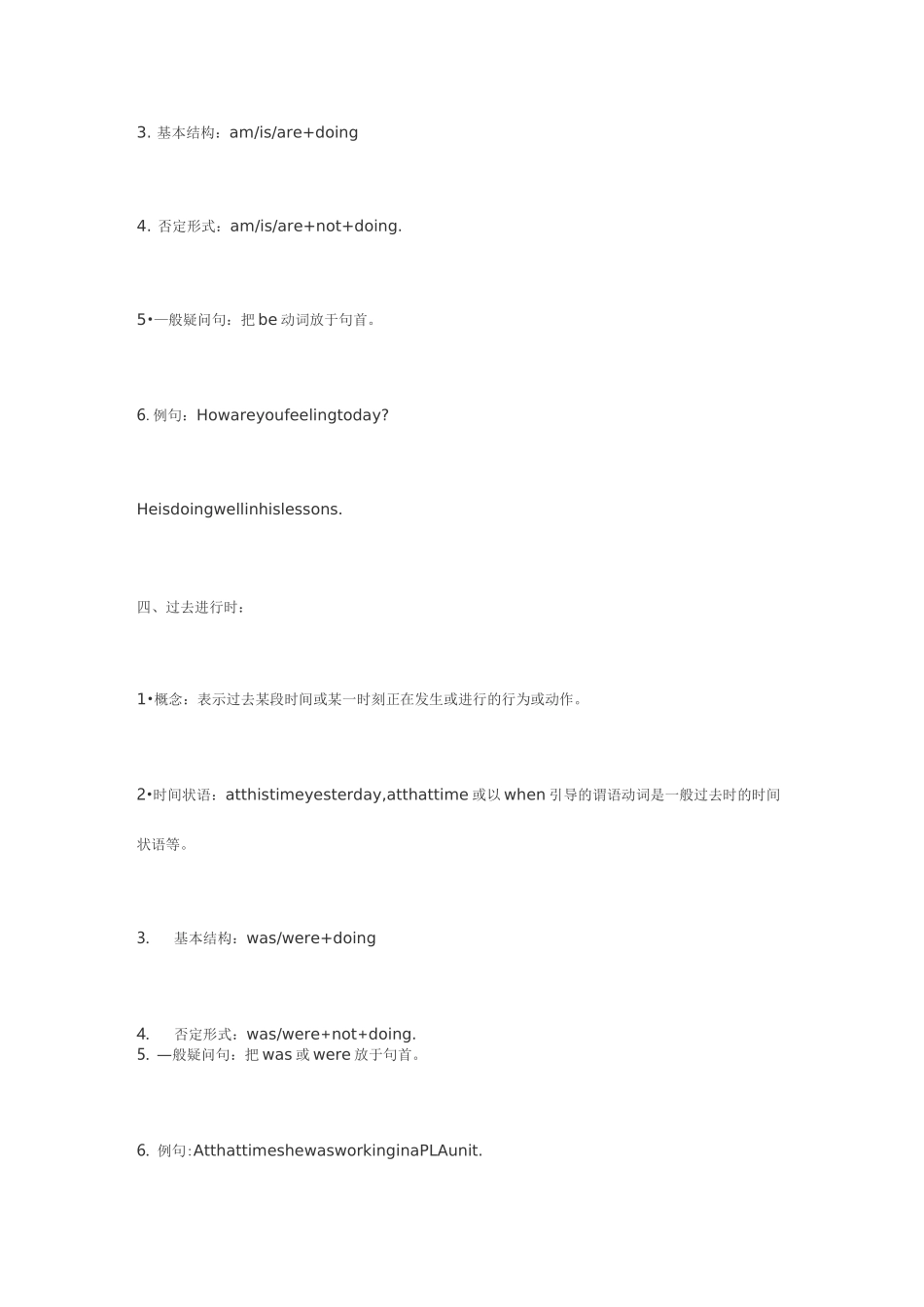英语中常见的八种基本时态—、一般现在时:1•概念:经常、反复发生的动作或行为及现在的某种状况。2•时间状语:always,usually,often,sometimes,everyweek(day,year,month...),onceaweek,onSundays,3•基本结构:动词原形(如主语为第三人称单数,动词上要加(e)S)4•否定形式:am/is/are+not;此时态的谓语动词若为行为动词,则在其前加 don't,如主语为第三人称单数,则用 doesn't,同时还原行为动词。5—般疑问句:把 be 动词放于句首;用助动词 do 提问,如主语为第三人称单数,则用 does,同时,还原行为动词。6•例句:.Itseldomsnowshere.Heisalwaysreadytohelpothers.Actionspeakslouderthanwords.二、一般过去时:1•概念:过去某个时间里发生的动作或状态;过去习惯性、经常性的动作、行为。2•时间状语:ago,yesterday,thedaybeforeyesterday,lastweek(year,night,month...),in1989,justnow,attheageof5,oneday,longlongago,onceuponatime,etc.3•基本结构:be 动词;行为动词4•否定形式:was/were+not;在行为动词前加 didn't,同时还原行为动词。5•—般疑问句:was 或 were 放于句首;用助动词 do 的过去式 did 提问,同时还原行为动词。6•例句:Sheoftencametohelpusinthosedays.Ididn'tknowyouweresobusy.三、现在进行时:1•概念:表示现阶段或说话时正在进行的动作及行为。2.时间状语:now,atthistime,thesedays,etc.3. 基本结构:am/is/are+doing4. 否定形式:am/is/are+not+doing.5•—般疑问句:把 be 动词放于句首。6.例句:Howareyoufeelingtoday?Heisdoingwellinhislessons.四、过去进行时:1•概念:表示过去某段时间或某一时刻正在发生或进行的行为或动作。2•时间状语:atthistimeyesterday,atthattime 或以 when 引导的谓语动词是一般过去时的时间状语等。3.基本结构:was/were+doing4.否定形式:was/were+not+doing.5. —般疑问句:把 was 或 were 放于句首。6. 例句:AtthattimeshewasworkinginaPLAunit.Whenhecamein,Iwasreadinganewspaper.五、现在完成时:1•概念:过去发生或已经完成的动作对现在造成的影响或结果,或从过去已经开始,持续到现在的动作或状态。2•时间状语:recently,lately,since...for...,inthepastfewyears,etc.3. 基本结构:have/has+done4. 否定形式:have/has+not+done.5. —般疑问句:have 或 has。6•例句:I'vewrittenanarticle.Ithasbeenrainingthesed...


